This Gowanus Factory Has History All Boxed Up
A 19th century brick factory building on Union Street in Gowanus was built for a successful packing-box manufacturer. Today, artists work and exhibit there.

Editors note: This post originally ran in 2015 and has been updated. You can read the previous post here.
A 19th century brick factory building at 543 Union Street in Gowanus once housed the business of the successful packing-box manufacturer James H. Dykeman. Today, artists work and exhibit there.
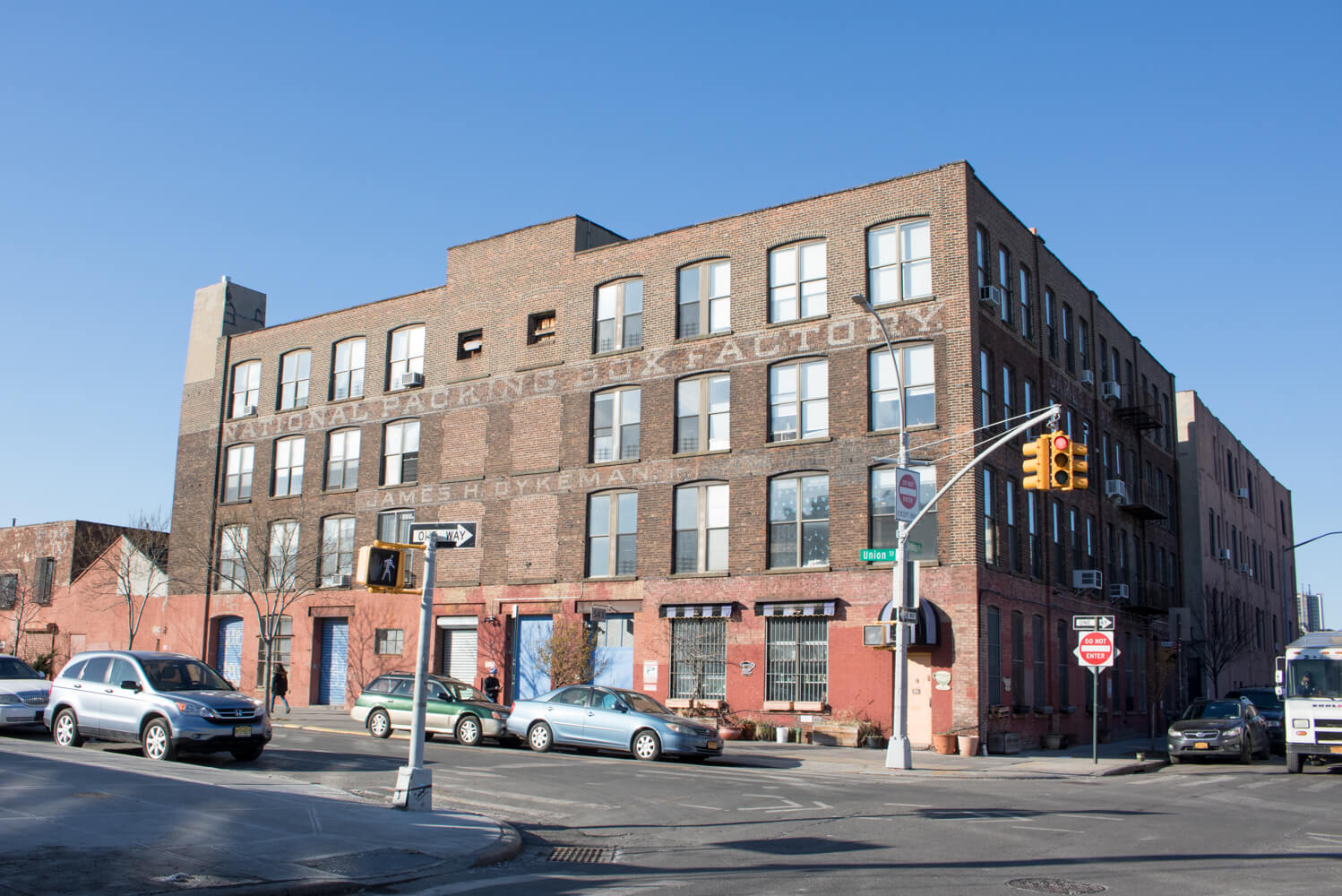
James H. Dykeman was a successful Brooklyn carpenter. In 1877, he decided to branch out and open up a box-factory business.
We tend to think of boxes in terms of cardboard, but back then, wooden boxes of all sizes, shapes and strengths were used to transport everything from fragile china to machine equipment. Someone had to make them — who better than a carpenter?
Enter Architect Robert Dixon
The factory buildings were designed in 1889 by Robert Dixon, one of many architects working in the latter quarter of the 19th century. Dixon doesn’t get a lot of press, but contributed greatly to the streetscapes of our brownstone and industrial neighborhoods.
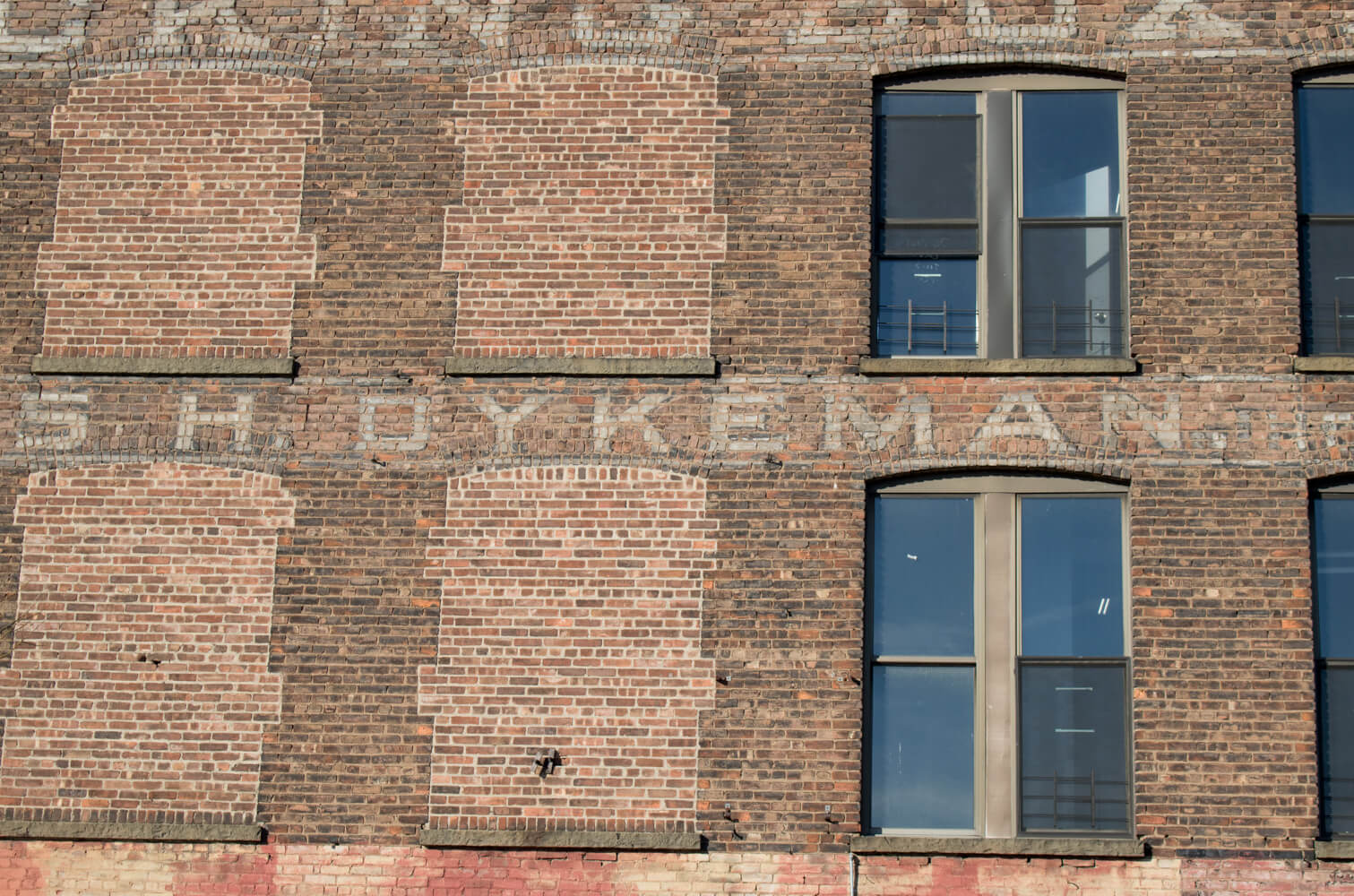
Like his client, Mr. Dykeman, Dixon’s earliest training was in carpentry. He worked with his father, Dominick Dixon, who was successful in the trade. He attended Brooklyn Polytechnic Institute and apprenticed with Marshall Morrill in 1876.
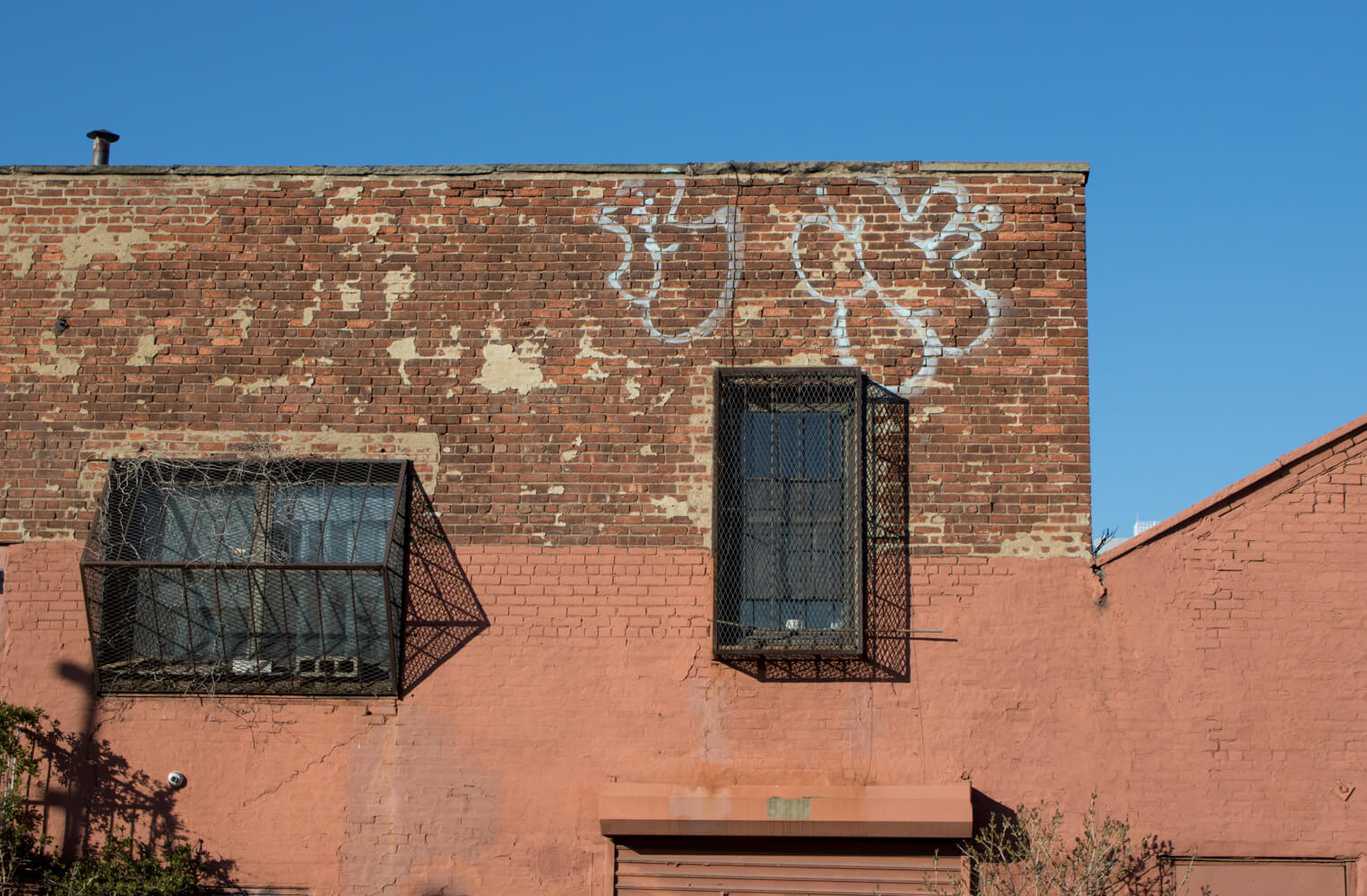
Morrill designed the Lafayette Avenue Presbyterian Church and the Feuchtwanger Stables, both in Fort Greene, among many others. After three years with Morrill, Dixon put out his own shingle and began collecting clients.
Many of his row houses are in Park Slope, including more than 30 buildings in the Park Slope Historic District Extension. They include row houses, storefront and flats buildings, as well as tenements. He also designed two now-demolished police stations, one in Coney Island and the other in Sheepshead Bay.
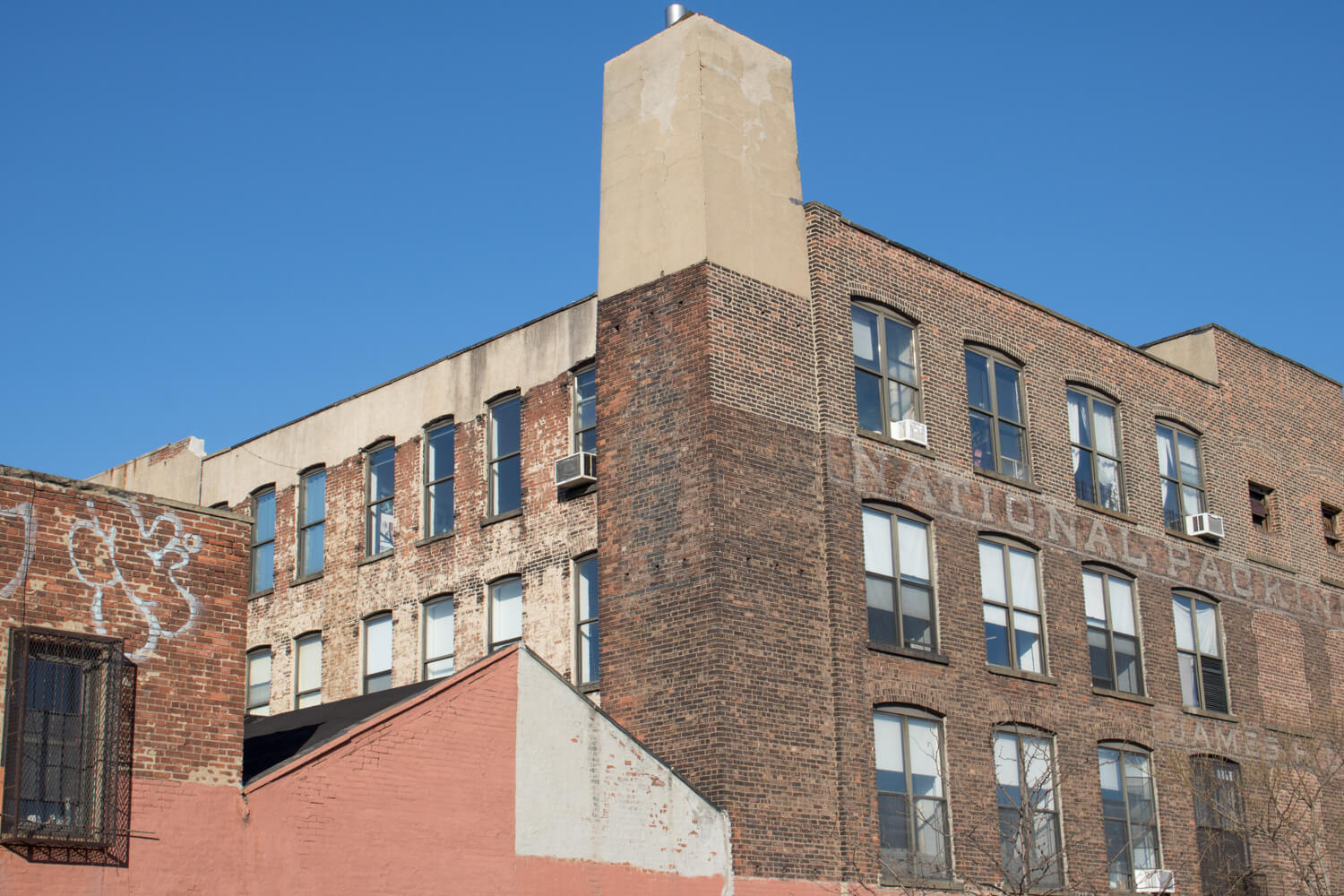
An extension of the Women’s Almshouse was his, as was a reworking of the Insane Asylum in Flatbush. He also designed the Tivoli Concert Hall in Park Slope and worked on the Casino and Jockey Clubs in Coney Island, also long gone. He designed a few other factories, too.
The National Packing Box Factory
James Dykeman’s first factory, on Front Street, was called the Union Packing Box Factory. It was destroyed in an 1880 fire along with several others, and he decided to rebuild at this corner of Nevins and Union streets and rename his business National Packing Box Factory.
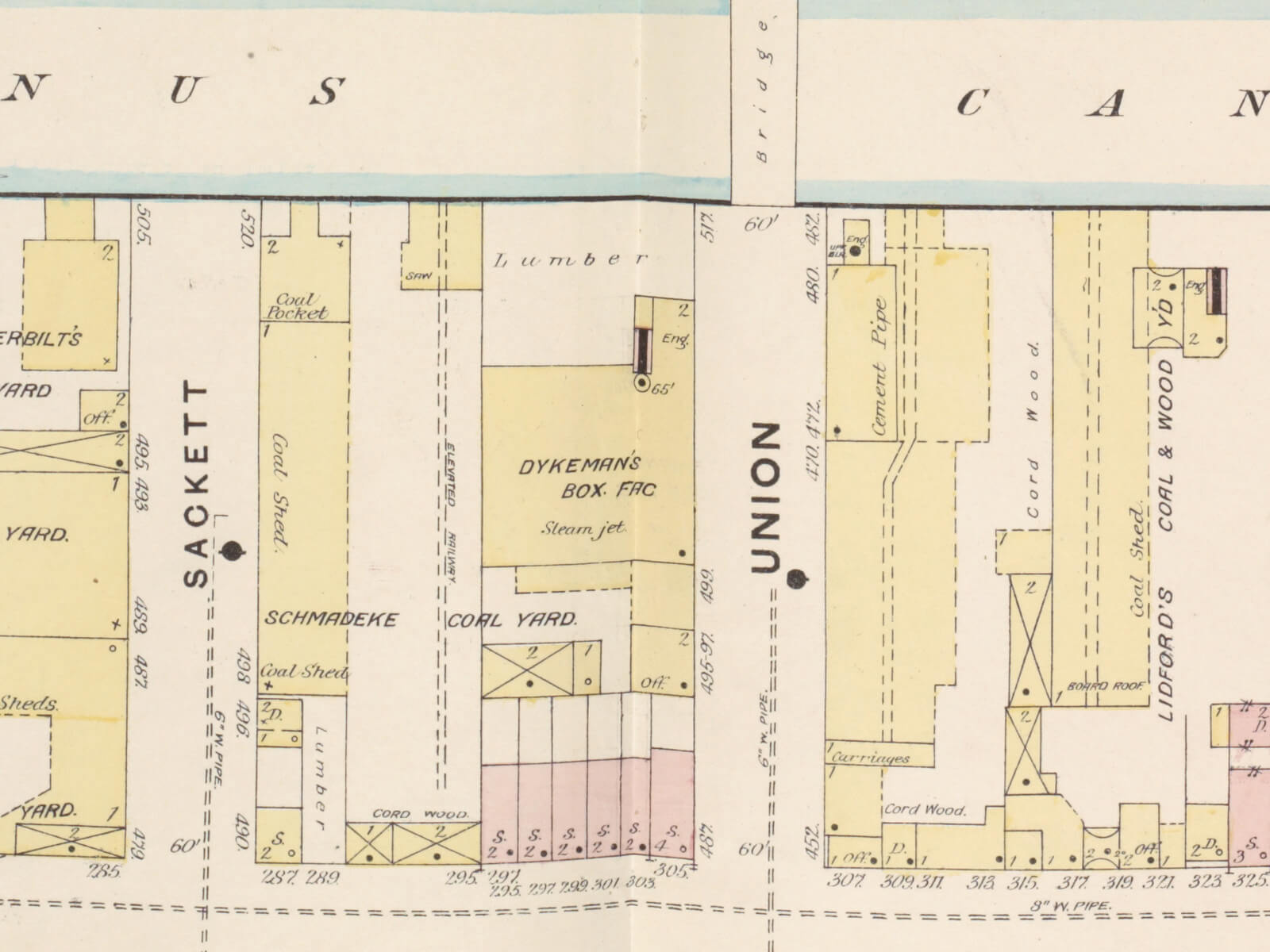
The Gowanus area was a perfect place for a factory. Dykeman purchased lots that backed onto a branch of the canal. Here he could receive shipments of lumber and other materials by water, a much easier and cheaper way to receive materials and ship his products.
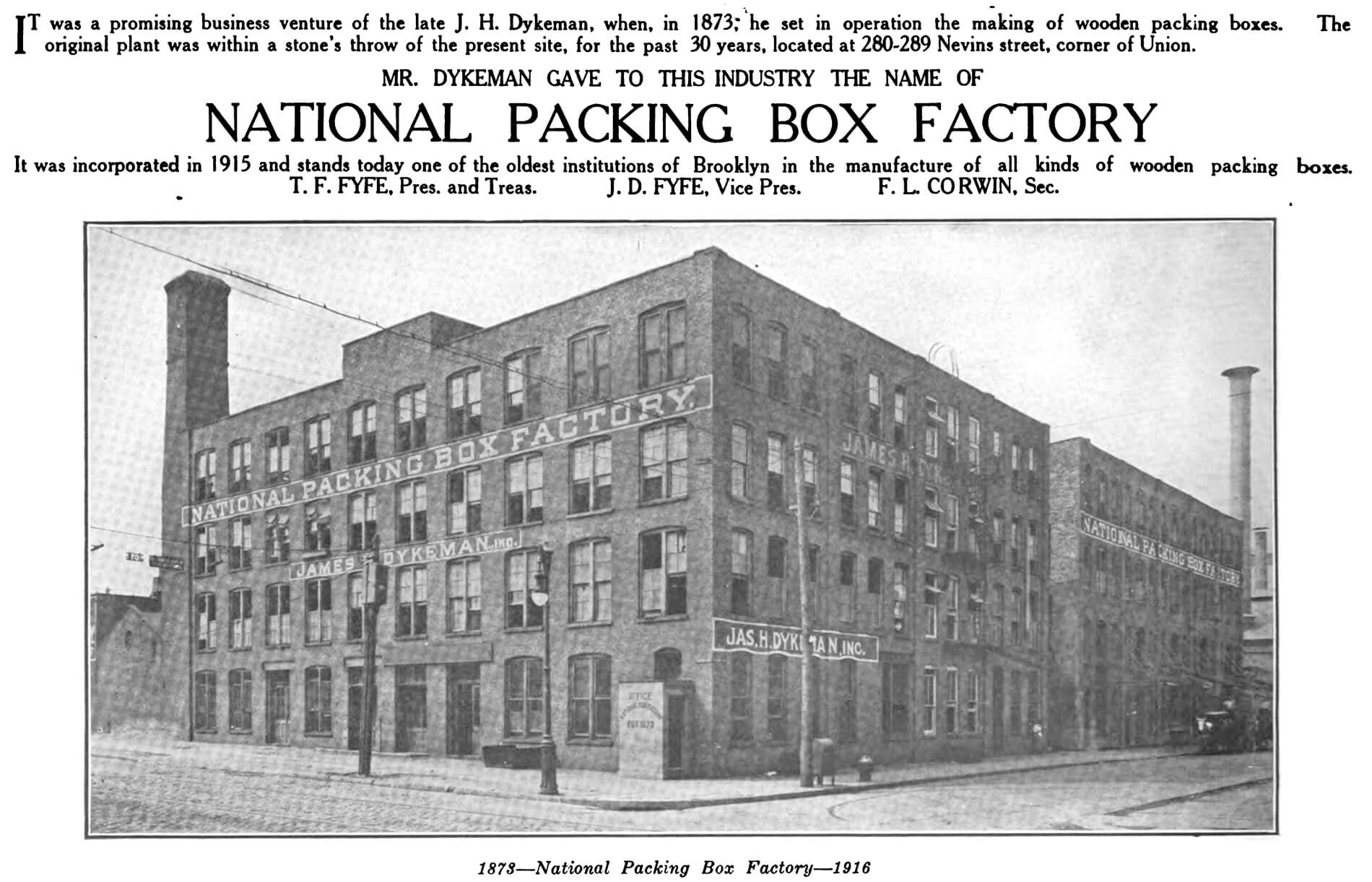
He was quite successful here, and the National Packing Box plant grew to include a total of five buildings, all adjacent to this main building. But in 1932 another fire burned out the rear of this building.
His business had been declining anyway. Between the growing use of corrugated cardboard boxing and the Great Depression, the business slowly died and went into bankruptcy in 1936.
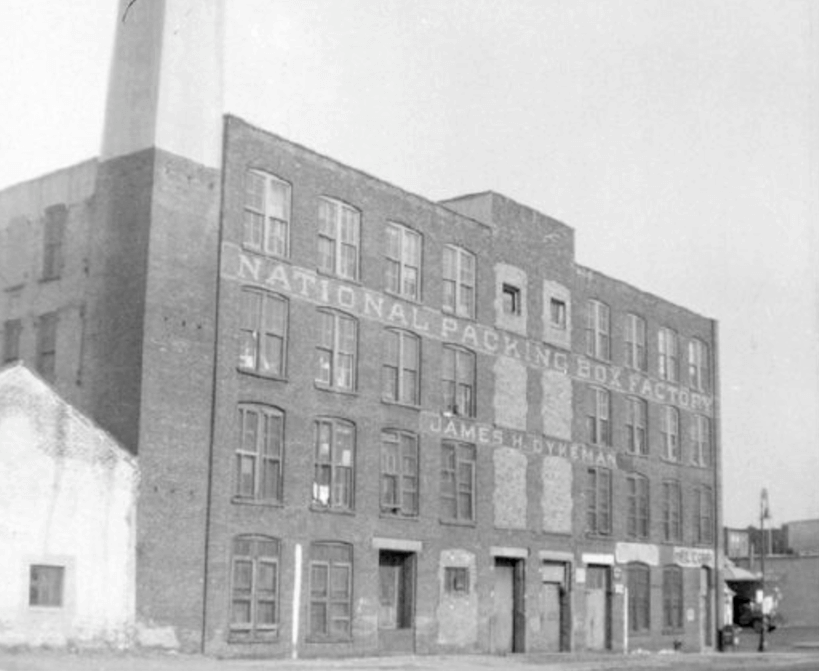
The buildings were sold and throughout the century were used by different industries, including brass and cabinet-manufacturing companies. But like many Gowanus buildings, they were often underused and empty.
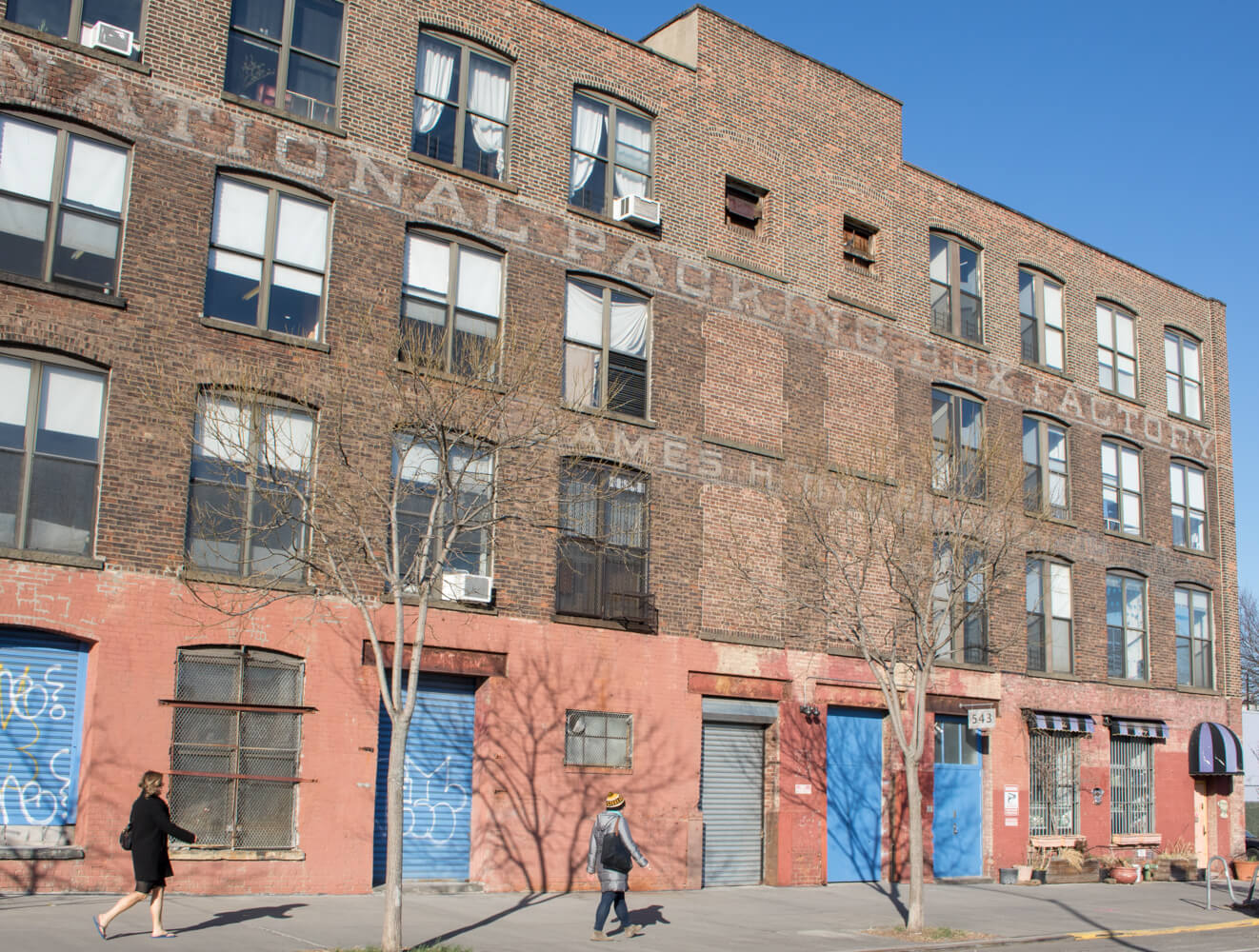
However, with the new popularity of large artist-loft spaces and the need for gallery space, life has come back to Gowanus.
For a decade, from 2005 to 2015, the building was the home of Proteus Gowanus, an interdisciplinary gallery and reading room that also housed a museum dedicated to the history of the canal and its surroundings.
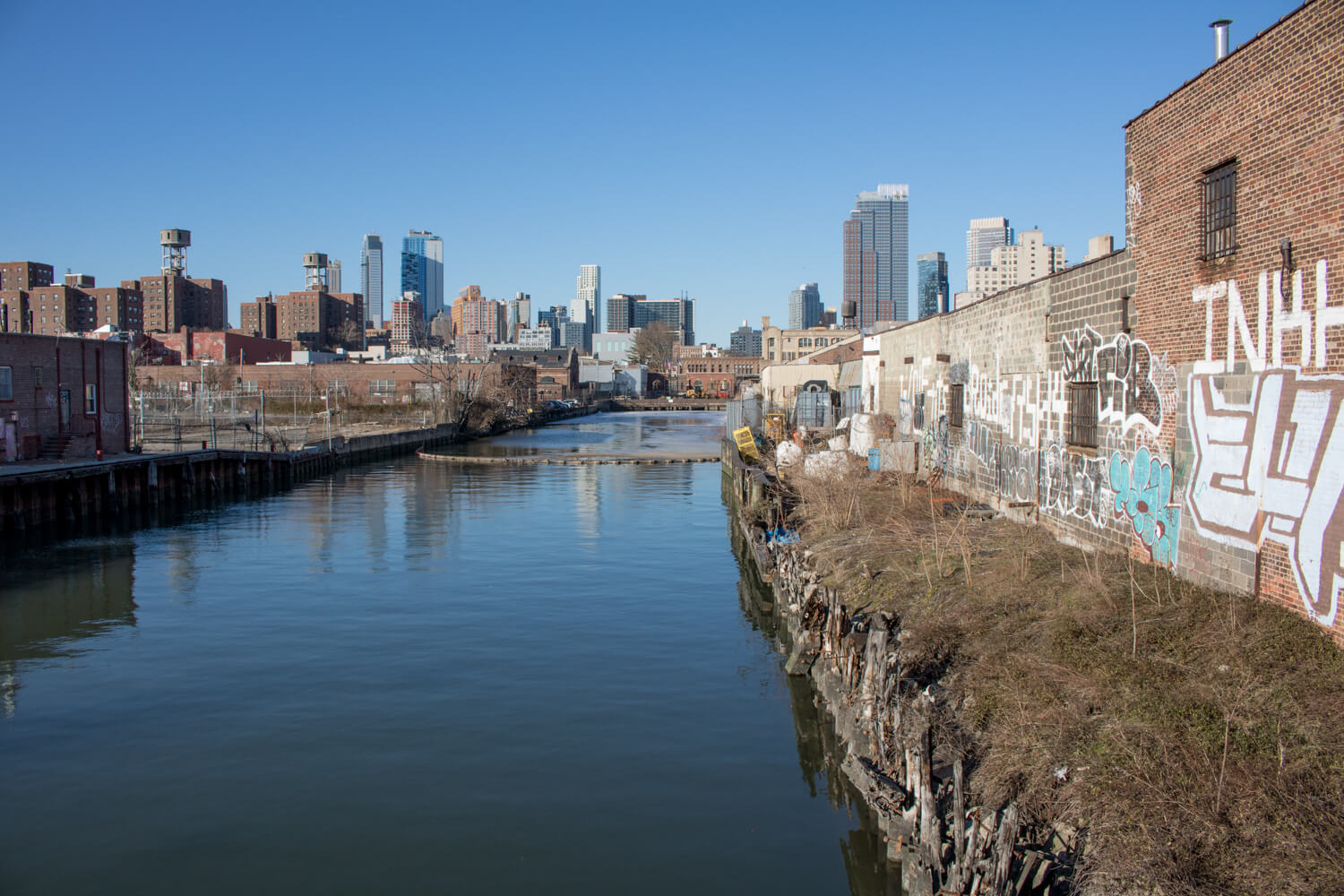
Today the building houses a studio and workroom for Claireware, the pottery business of artist Claire Weissberg. Her showroom is entered through the bright striped awning in many of the contemporary photographs.
[Photos by Susan De Vries]
Related Stories
- Here’s What Gowanus Looked Like When It Was Occupied by a Massive Pond
- Chief Sleep and the Stinky Canal: How Gowanus Got Its Name
- 194 Butler Street, a Family Building in Gowanus
Email tips@brownstoner.com with further comments, questions or tips. Follow Brownstoner on Twitter and Instagram, and like us on Facebook.









What's Your Take? Leave a Comment